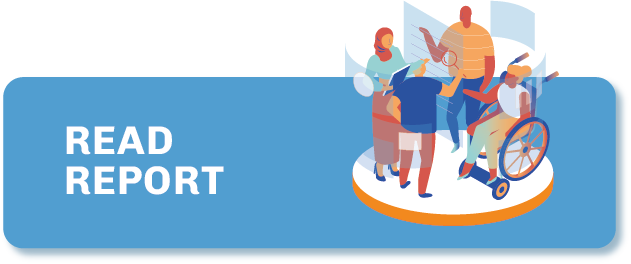The United Kingdom
Digital native media organisations have emerged in the United Kingdom (UK) as a response to issues such as “news deserts”, concentrated ownership and a lack of plurality in the British media sector. Even without a sustainable revenue stream, they hold power to account, discuss topics overlooked by mainstream media, elevate marginalised voices and engage communities.
GENERAL INFORMATION
Press
freedom
ranking
Internet
penetration
POPULATION
PRIMARY
LANGUAGE(S)
- English
Media organisations
in the Directory
TYPE OF COVERAGE

TYPE OF ORGANISATION

GENDER OF FOUNDERS

Press freedom
In the UK, the phenomenon of SLAPPs (strategic lawsuits against public participation), which can be characterised as abuses of the law, mainly by political and business elites to protect themselves from media scrutiny, is raising press freedom concerns.
Journalists investigating financial crimes and corruption are the most threatened. SLAPPs aim to delay a publication or exhaust the defendants’ financial resources, causing several impacts on journalists and organisations such as self-censorship and economic and psychological damage, points out a new report published by the Foreign Policy Centre and ARTICLE 19 on the issue.
Recently, the Bureau of Investigative Journalism and openDemocracy launched a crowdfunding campaign to support their defence against libel claims brought by Nazarbayev Fund and a UK holding company from an investigation they published.
The order signed in June 2022 by former Home Secretary Priti Patel to extradite WikiLeaks co-founder Julian Assange to the United States is another issue impacting press freedom in the UK. The safety of journalists is also of particular concern, especially in Northern Ireland, where Belfast journalist Lyra McKee was shot in the head during rioting in April 2019.
Market structure and dominance
The UK media market is structured into legacy media and online media, with a mass circulation of commercial national print titles, a well-funded and regulated broadcasting service and a system of public service broadcasting headed by the British Broadcasting Corporation (BBC), the most popular source of news, both online and offline.
Meanwhile, national newspapers are continuing to diversify their business models, turning their focus to online subscriptions, registrations and memberships, notes the Reuters Institute for the Study of Journalism — many newspapers have digital editions, due to the predominance of digital audiences.
According to Ofcom, television remains the platform most widely used for news among older age groups, but there are significant changes in how audiences consume information today. Online and social media is increasing in popularity, especially among young people, with TikTok and YouTube being the most-used sources for news.
There is an issue of “concentrated ownership” and lack of pluralism in the UK media industry; according to a Media Reform Coalition report, three companies – DMG Media, News UK and Reach – dominate 90% of the national newspaper market, up from 83% in 2019. Just six companies control 83% of UK local newspapers, it adds, while two companies – Bauer Radio and Global Radio – own 70% of the UK’s 279 local commercial analogue radio stations.
How media is funded
The government is a major source of funds for media through licence fees (which primarily fund the BBC) and indirect subsidies for news production, through the zero rate for VAT on newspapers, journals, periodicals and magazines, as noted in the report Media Influence Matrix: United Kingdom.
Advertising is the second most crucial revenue stream for most media organisations, online and offline. According to the Reuters Institute for the Study of Journalism’s Digital News Report 2022, only a small proportion of the population pays for online news (9%).
Philanthropy is not so common, but is becoming a significant source for the non-profit news sector. In 2019, the government offered an “innovation fund” to help independent news publishers develop new business models and other digital capacities, and awarded 20 grants to various independent news projects, including digital native media outlets.
In the same year, the Public Interest News Foundation (PINF) was launched, the first foundation in the UK dedicated to attracting and awarding funding for independent, non-profit news organisations. Other organisations, including the Independent Community News Network (ICNN) at Cardiff University, the UK’s representative body for the independent community news sector, exist in order to promote and support community and hyperlocal publishers, and to “champion new and sustainable forms of local digital and print journalism”. Still, lack of funds is an issue within the non-profit sector.
Twenty-five profiles of digital native media organisations from the UK are included in the directory. This includes 20 profiles based on interviews and five profiles based on desk research.
Most of the digital native media outlets included are non-profit organisations, created by individuals or groups structured mainly as community interest companies (CICs), focused primarily on local and hyperlocal coverage. However, charities, cooperatives, social enterprises and limited companies are also part of the digital native media ecosystem.
Newsletters, podcasts and print versions, in the form of newspapers or magazines, are used to share content in new ways, and are also revenue sources through advertising. “One of the aims of the magazine is to address people who don’t have online access,” explains Rhiannon J Davies, founder and editor of the Greater Govanhill publication in Scotland.
These organisations are exploring alternative ways to tell stories and meet marginalised groups’ needs. Each Other uses storytelling and filmmaking to raise awareness around human rights issues. Carmarthenshire News Online runs The News Van, a mobile newsroom at the heart of communities in Wales, recording live programmes with residents. The Queer AF podcast is also a mentorship scheme, helping LGBTIQA+ creatives to improve their skills and get paid commissions. West Leeds Dispatch has a team of more than 50 community reporters. It runs six-week training courses at its community newsroom.
Grants are the primary revenue source for the organisations included in the directory, followed by advertising and individual donations, but membership models are becoming significant. Some organisations such as The Bristol Cable and The Ferret are having success getting people to pay for their content with their cooperative model. Their members are not just passive supporters, but the core part of their financial sustainability as well as democratic shareholders, participating in structural decisions.
Lack of funding is the main challenge for digital native media outlets, leading to further issues such as a lack of staff and resources. In some cases, there is only one person employed, and, commonly, journalists supplement part-time jobs with volunteer work in the organisations.
“I can’t take a wage, and I often work 12 hours daily. We can’t sustain our service much longer without help. Google has funding, but we struggle to access it as we don’t have someone who can fill out forms etc., ” explains Carmarthenshire News Online founder and editor Alan Evans.
Thus, membership is seen as the light at the end of the tunnel for many organisations. “We need to persuade readers to support us, or we will not survive,” says Rikki Blue, Real Media director.
Even with many challenges, the native digital media sector is flourishing in the UK. It represents an alternative to legacy media issues such as concentrated ownership, lack of pluralism and media distrust. These organisations are bringing their local realities and underrepresented voices to the news. However, the sector needs sustainable financial support to grow and maintain a more equitable media ecosystem.
Last updated: January 2023
CREDIT FOR STATISTICS: Press Freedom statistics, RSF Press Freedom Index 2022; Internet penetration and population statistics, from Internet World Stats

